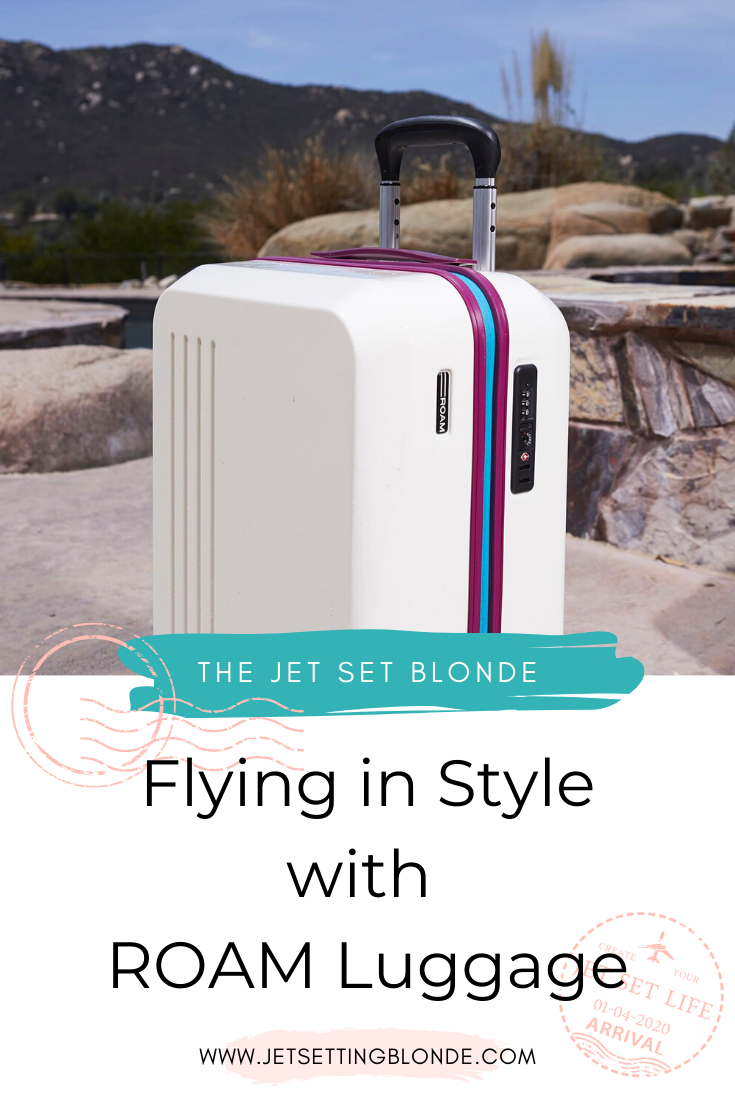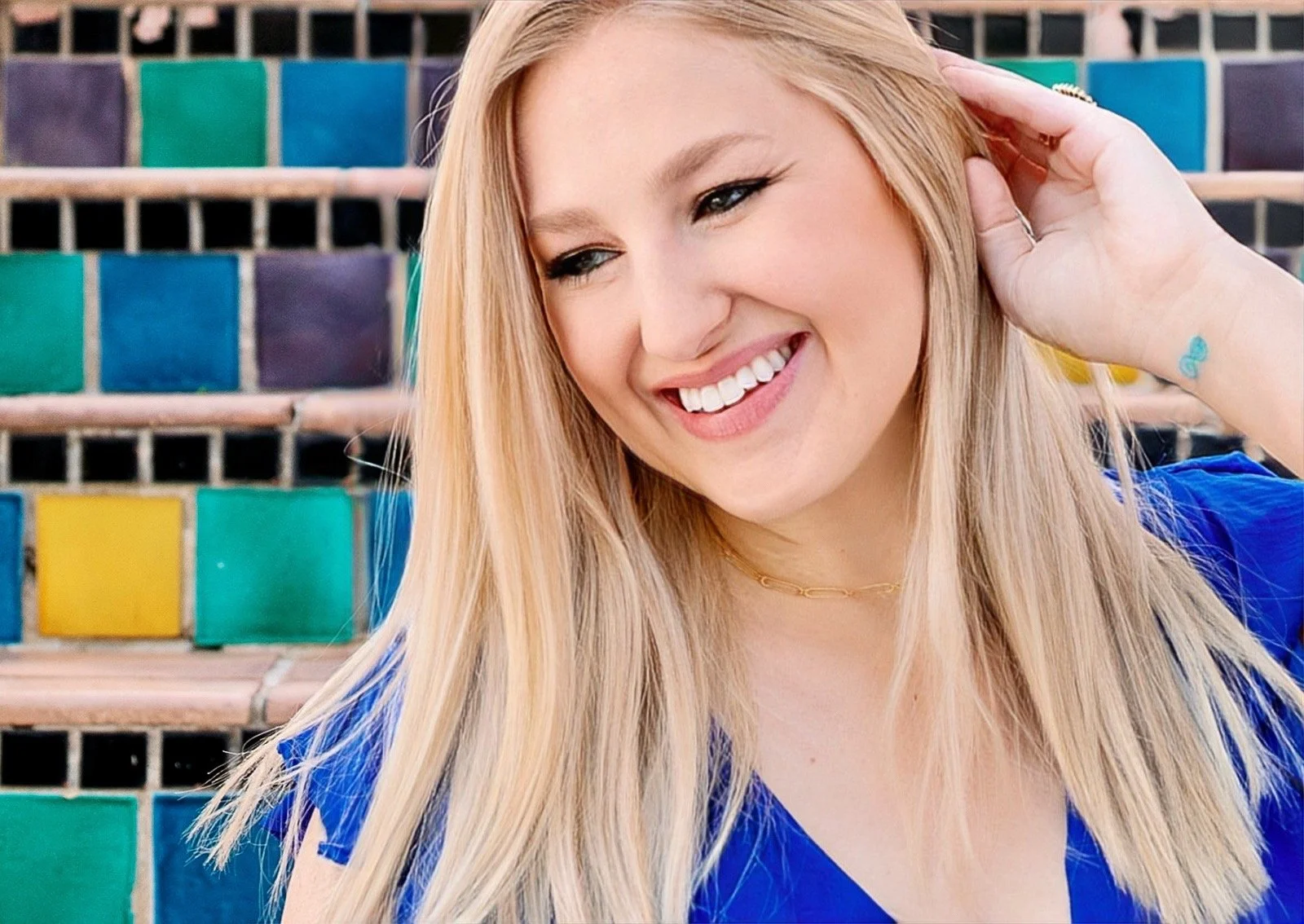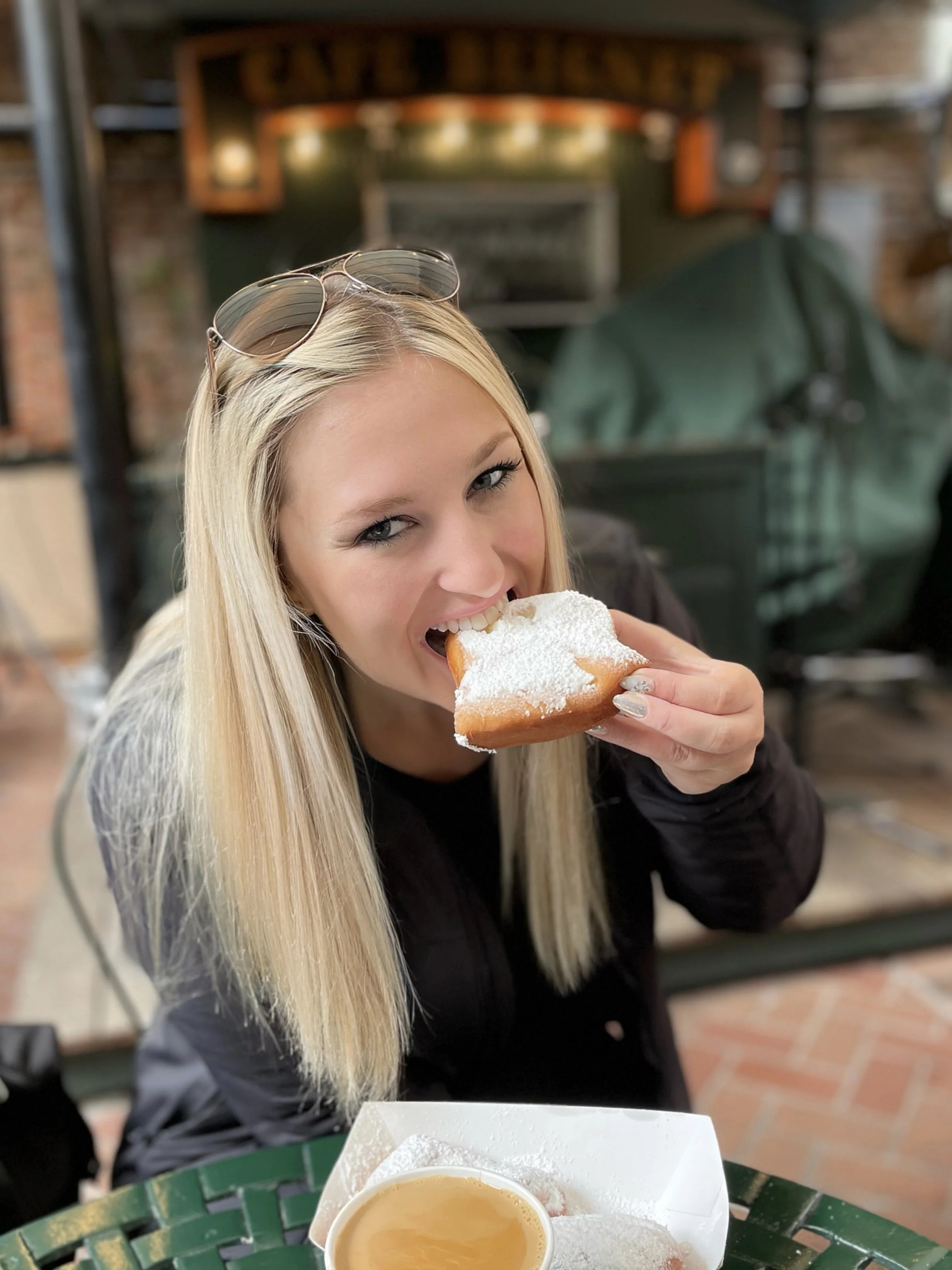Fly In Style with ROAM Luggage
This week I have the pleasure of chatting with Charlie Clifford and Larry Lein, the creators of ROAM Luggage - a completely customizable premium luggage brand. As former executives at Tumi, Charlie and Larry understand how a high-quality well-made piece of luggage can elevate your travel experience to that of luxury. Get advice on how to pick out the best suitcase for you and learn what makes ROAM Luggage so special.
Jet Set Life Interview with Charlie Clifford & Larry Lein of ROAM Luggage
Charlie Clifford, Co-Founder of ROAM Luggage
Larry Lein, Co-Founder of ROAM Luggage
TELL US A LITTLE ABOUT YOURSELF AND YOUR BACKGROUND.
Charlie Clifford - “I grew up in New Jersey. I went to school in the Midwest at Indiana University, studied literature, and decided that I needed to get some more practical education on top of that, since I was not going to be the world's next greatest writer or an academic. So I went on to the Kelley School of Business at Indiana University.
Then I went into the Peace Corps and spent a couple of years in Peru. I was married in the Peace Corps. My wife and I married before my second year in business school; we had two terrific years in Peru, traveling throughout South America. I grew personally an enormous amount. I came back and worked in industrial marketing for about four years. Then I invested in a small entrepreneurial company and began covering the eastern region for sales for a company that was doing handcrafted products from South America.
And I left that after a year or two and found Tumi. I had a co-founder that time who had left the company after eight or nine years and I bought him out. And then I went on to stay at Tumi Luggage for almost 30 years.”
Larry Lein - “So I grew up born and raised in New York City. I've spent my whole career essentially in retail consumer products. I started my career at Macy's - in their executive training program and became assistant buyer. Then I left Macy's for business school - I went to Harvard Business School. After that, as many Harvard Business School graduates do - did and still do, I became a management consultant in a strategy firm based in New York.
I was there for seven years and was making a business development speech to the luggage industry at a luggage industry symposium. I was pulling my slides together at the end when a guy walked up to me and said, ‘I started a small company, but I think we can really do something great in the luggage industry. And I liked some of the things you were talking about.’
That guy was Charlie, of course, and we had lunch and hit it off. About two weeks later I was working for Tumi, originally as his Vice President of Marketing. I then became Executive Vice President with responsibility for the whole front end of the business. Business grew quickly - it was around $8/$9 million. When I joined, we grew very fast in the 90s and started to open up stores with partners and then on our own.
The irony is that Tumi's success was in convincing the world that everybody should be carrying black, black on black. And the brand was built on that. Of course we developed other colors, but Tumi is a brand that's known for black. And we succeeded in making black the uniform of travel…now we're dedicated to making every color but black the uniform - basically rejecting the idea of uniform entirely and saying, ‘There is no uniform. Design your own. Use color and make it your own. No uniform at all.’ So that's kind of a funny career twist.”
What’s the story behind ROAM Luggage?
Larry Lein - “In 2016, these two guys came to us and said, ‘We've developed the capability to make high-quality polycarbonate luggage in the US.’ Essentially 98% of luggage is made outside the United States now. Tumi originally made luggage in the United States, but stopped in the early 2000s and moved it to China. In the luggage world today, virtually everybody, including every branch from Tumi on down, manufacture in mass production factories in China. So this was kind of interesting.
And they said, ‘We can't figure out how to sell them; maybe you guys can help us figure out how to sell it.’ I went out to their factory and observed how they made the luggage. They made their luggage in three colors - black, silver and tan. As they made the luggage, they took the pieces and put them together. I asked if they could do half of the shell in black and half the shell in tan and sew those together. They said that there was nothing to keep you from doing that.
I saw that it didn't take a huge amount of time to put together a suitcase; it took a lot of expertise and know-how to do it properly. But it didn't take a lot of time. So it occurred to me that we could have people order online since we were direct-to-consumer, and they could customize their colors. We could build it to order and then ship it in a relatively short amount of time. Nobody else could do that; you could only do that if you're making in the United States, because otherwise it would take too long to get it back and forth. So that's how the business model developed.”
Charlie Clifford - “We founded ROAM because we really thought there was an opportunity at the upper end of the market. There were a lot of companies doing product in the middle of the market that was mass produced in China. But we thought if we concentrated on the upper end of the market and could do something that was really unique, then we could take what we'd learned at Tumi and really bring it to a different level. We thought if we develop luggage where people could express their personalities, that we would be able to really create a substantial niche market where people were wanting to show their personal style.”
What are you particularly proud about when it comes to the ROAM Luggage brand?
Larry Lein - “There were a few founding principles of the company. One was making the luggage in the US. Two was having it be customizable by the consumer and us being able to turn it around in one to five days basically. And then the third one - very dear to the heart of Charlie and me - was making the best piece of luggage in the world. That's what we set out to do at Tumi and what we established a good reputation for doing. And it's what we wanted to do here too.
I come from old school marketing, and my belief is that the greatest brands in the world are brands that are founded upon a great product. We take great pride in what we build. And we have the experience to do it. We know what a great piece of luggage is.”
What makes ROAM Luggage unique from other luxury suitcase brands?
Larry Lein - “We spent the whole year of 2017 working with one of the top industrial design firms in New York, sweating every detail of the design...and there are a lot of details. It starts with the shells and the idea of making them light but still strong and the aesthetic design and making something that's distinctive, and then how the shell is molded.
We're the only luggage company that sources its polycarbonate plastic and does all of its forming of the shells in the United States. US polycarbonate is a great product. And we want to have full control over the process.
The design process took us a full year from beginning through prototypes and everything. Every single component - we look for the best. We use the best wheels from the best wheel manufacturer in the world. Our pull-up handles - same thing…the lining fabrics, the zippers, everything. There's a sharp difference here between luggage that is mass produced in a Chinese factory making 10s of 1000s a day versus our workshop, where we make 30 to 50. And each one, one by one, built to order and watched over by our team. It's just a different level of caring in the way the product is built.
The result is something that is very hard to explain what it is. But when you use it, you know - just like when you get into a BMW. When you close the door and start the engine, you know you're in a car that people designed well and built well. And the result is a great feeling.
Our luggage is designed with compression works, which is basically a mesh panel with a frame so it's rigid. So you pack in one side, put the compression board on it, and then it straps down. Number one - it creates extra space because it compresses everything in there. But also, maybe more importantly, when you get to wherever you're going to and you open up the suitcase, everything is exactly as you folded it / packed it in place. Before, even with tie-down straps, everything gets jumbled up. And it's never completely full. There's always space in it and things just get messed up. With our luggage…no matter what you put in…it'll arrive perfectly. And it's terrific.”
Charlie Clifford - “It's really the ability for people to express their personal sense of style. That's what makes ROAM special. It's fun to design your own luggage. It's even more fun and gratifying when somebody is traveling and they realize that their most important accessory when traveling is something that they've created themselves; they designed it themselves. Typically they'll get compliments from fellow travelers - you don't see lots of ROAM on any particular flight...we're still at a very young stage - so it stands out. It stands out because of its design; it stands out because of the color combinations, and becomes a topic of conversation.”
Larry Lein - “Yeah, we also have customers who design different bags for different types of trips. They use one for business, then when they're going off on their family trip, they get a little more adventurous and do something else. So it kind of goes with the mood. You have different wardrobes…why not have different luggage? And I think that's the point. The whole point is to have your luggage reflect your personality…reflect what you're feeling. Our tagline is, "Show the world who you are". It’s what you want to show the world in that particular moment in time about yourself.”
What challenges did you faced as you were starting up?
Charlie Clifford - “There were a number of hurdles. But I think the overriding challenge was to figure out the ins and outs of the direct-to-consumer (DTC) business. We had had experience with e-commerce and selling over the internet with Tumi and beyond Tumi when we were working with some of the European brands. But being a company that was solely a direct-to-consumer with no wholesale distribution was different. We were not working with a large number of brick and mortar retailers as were other brands.
It's really a challenge to figure out the algorithms…the different ingredients that you need to master to create enough visibility for the brand. If you're selling through retail store locations, people will find you and they may buy in the store - they may buy online later - but you have tremendous reach of visibility. When you sell only over the internet, it does take time and patience to get the word out there and create sufficient recognition of the brand so people feel comfortable buying at a higher price point to get a premium piece of luggage.
Larry Lein - “Yeah, that's definitely true. If I could just add something to that. First of all, neither Charlie nor I are digitally native. We're about 30 years too old for that probably. That's an obstacle because this is a digitally native world - the direct-to-consumer, e-commerce world.
I think startups face a particular couple of challenges that were tough. One is the issue of getting funds and moving the business along. It’s a bit of a juggling act. We went through a year of product development, which requires some funding - you got to pay the designers. Eventually you need prototypes.
So you need funds...but in order to raise funds, you need a product because people want to see what the product looks like. But you can't have a product and no company name. So you need a name. And to get a name, you kind of need an agency to help with that - to develop a brand. And that needs a branding agency, which requires money.
So there's this constant kind of juggling of trying to bring in some money to make that all happen. It's a very hand-to-mouth kind of thing. The other issue is finding good people who are qualified to do what needs to be done and also willing to take the risk of working for a startup. That's a tough one too.”
What’s your personal favorite color combination for ROAM Luggage?
Larry Lein - “I actually have two favorites. I'm a Mets fan so I have one that's blue with orange trim. But my go-to is a Venetian green that I like very much. That's been my more recent go-to bag.
Charlie Clifford - “There's three or four color combinations which I like. I like the grays and the blues. The matte black is terrific. It's a semi-gloss - not a completely flat matte black, but it's a great color. Sometimes when black has a very high sheen, it doesn't look quite as classy. So you can treat it with a semi-gloss finish, as all of our colors are treated. On the black, it looks particularly striking.”
Larry Lein - “Charlie bleeds Tumi black and red. He likes that black with red trim.”
Charlie Clifford - “Well, I think they work very, very well together.”
Larry Lein - “It's great. Black with red trim is beautiful. It really is a great bag.”
Charlie Clifford - “But blacks, blues, grays, and sometimes with a little bit of red trim, as Larry suggested.”
What advice would you give someone if they were investing in a new piece of luggage?
Charlie Clifford - “There's a huge difference between getting a quality piece of luggage and something that is very moderately priced or low priced. I think it was Aldo Gucci who said, "Quality is remembered long after the price is forgotten".
So whether somebody ends up buying ROAM or one of the other premium brands, investing in a piece of luggage that will last you for years is much wiser than just buying something that's on sale or buying something that's a more modest price.
You'd be spending two or $300 more for a piece of luggage. Think of that over the course of 3, 4 or 5 years - that's less than you're spending for buying a cup of Starbucks every day. So I think investing in quality would certainly be my single most important piece of advice.
What makes quality in this day and age is something that combines durability and strength, while still being very lightweight. It's easy to build a heavy piece of luggage that’s strong; it's easy to build a very lightweight piece of luggage, but that might not necessarily stand the test of time. It's not really designed to travel over bumpy cobblestones or whatever.
The handles are important. The wheels are very important. You want wheels that will roll easily. And there's a big difference between wheels. Wheels may look the same but whether or not they contain ball bearings is a key point of differentiation. We've got the world's best wheels on our luggage. I don't think there's anything lighter than what other brands are using. The wheels, handles. Lightweight strength, but not too heavy.”
Larry Lein - “Just from personal experience, I would say learn how to pack into a carry-on and try to take a carry-on wherever you go. We make a great carry-on - our Jaunt XL. It's two inches wider than a standard carry-on, which we also make. Our Jaunt XL allows you to pack two stacks of clothes in each side going horizontally. You can fit an awful lot into it. And it's just so much of a nicer travel experience if you can get away without checking a bag. That's a big plus.”
What's next for ROAM Luggage?
Larry Lein - “We just launched Expandables, which are great. I pick stuff up on the road. With Expandables, you can go out with your luggage unexpanded and use it as a carry-on, then come back with it expanded to accommodate a lot more room.
We are also starting up with soft bags this fall. We are launching backpacks in October and totes and soft luggage in the months after that because they're great accessories for people. They'll be made in our same factory, and we will offer full color customization, so they will be ROAM bags in every respect.
Where can people learn more about ROAM Luggage?
Larry Lein - “You can visit ROAMLuggage.com. If they're in New York City, they can visit our shop in Bloomingdale's.”
author bio
Known as The Jet Set Blonde, Brittany Ryan inspires others to add more adventure to their childfree travel experiences. Brittany has visited 23 countries (and counting!) Connect with her to get access to detailed childfree travel itineraries, travel guides for weekend getaways, and updates on adult-only hotels, resorts, cruises, and other travel amenities.






























